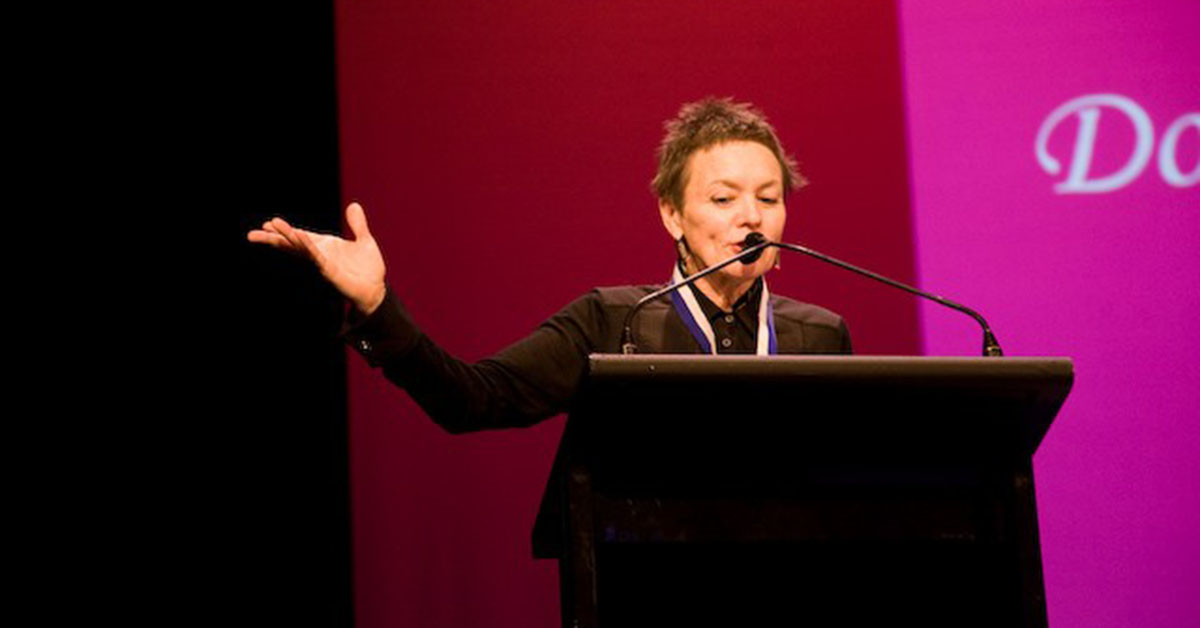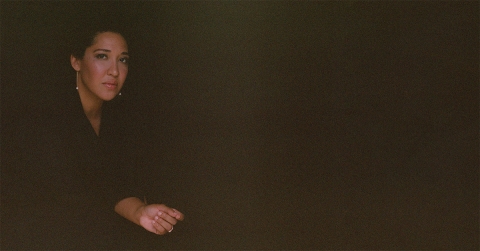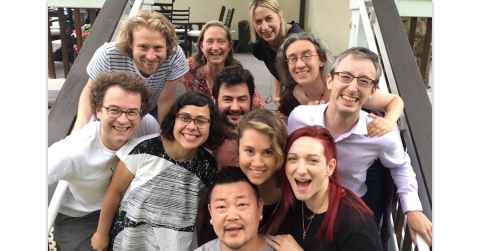In a ceremony held at Manhattan's Hudson Theater last Tuesday, Laurie Anderson was awarded the esteemed Dorothy and Lillian Gish Prize. Named in memory of the early-film era stars, each year, the prize honors “a man or woman who has made an outstanding contribution to the beauty of the world and to mankind’s enjoyment and understanding of life.” Here is a transcript of Laurie Anderson's acceptance speech from the event.
In a ceremony held at Manhattan's Hudson Theater last Tuesday, Laurie Anderson was awarded the esteemed Dorothy and Lillian Gish Prize. Named in memory of the early-film era stars, each year, the prize honors “a man or woman who has made an outstanding contribution to the beauty of the world and to mankind’s enjoyment and understanding of life.” The following is a transcript of Laurie Anderson's acceptance speech from the event:
Thank you. First let me thank all the people associated with the Dorothy and Lillian Gish Prize—the advisors Pamela Johnson and Alberta Arthurs and Erica Berg Gavin and the chair Adele Chatfield-Taylor as well as the selection committee.
I love, in the wording of the prize, the phrase about making a “contribution to the beauty of the world”—words that almost seem to come from another era. And it really made me start to think about what the word beauty actually means these days in America.
As an artist I work with lots of different media, but mainly what it comes down to is story telling. I tell stories. And I love stories. They’re illusions. You can make them up. You can get a lot of people to believe them. You can even get a lot of people to believe a story about how they’re in great danger and how there’s an evil despot with lots of hidden weapons who wants to kill you. I mean you can actually start wars with stories. That’s how magic they really are.
And if it’s a really good story, you can tell it again. Just add a few new details about mushroom clouds hanging over US cities and invasions of the homeland. Just change a few names and places and you can tell the exact same story again and you can start another war. Because everyone forgot that the first story wasn’t a true story. But of course the point was never that it was a true story. The point was that it was that it was a good story. A really scary story. Scary, convincing, and beautiful.
So what do stories mean in a country where the government promotes violence and is also very media-savvy, very story-savvy? What does a true story mean now? What’s a beautiful story? And what does it mean when labels are slapped onto concepts? When the Geneva Convention for example is suddenly labeled quaint? How do concepts like beauty and truth work these days? Have they also become quaint? Something from other simpler times?
One of the big stories now, one of the most-told stories is about how the world is getting hotter. More crowded and dangerous. It’s about arctic floods and disappearing resources and entropy and the world winding down. And nobody knows whether it’s fiction or not. But it’s such a complicated story, and like with many complicated stories about the future, there’s no way to absolutely prove which version is true. It’s just sort of a matter of preference. Which story do you like better?
Recently I spent a couple of years as artist in residence at NASA, and one of the things I loved about NASA was that they also have stories with very long time lines. But many of their stories are really upbeat. And who knows? Maybe even true. One of these is a story about a project with a 5,000-year time line. And the idea of this story is to move all the manufacturing off the earth onto the moon and Mars and then to gradually remove all the toxic and radioactive materials and to ship this off. And this, along with extreme population control, would allow the earth to repair itself, to return to its original state, back to a kind of Garden of Eden, whatever that was.
Of course, there are a few problems with this plan. One is an issue currently in the international courts involving ownership and a claim by a Chinese realty company that they own the moon. Of course, this is a pretty big problem, because the Russians are saying, “Wait a minute! We got there first. We planted the first flag.” And the Americans are saying, “No, no. No way! We had the first man there.” And the Italians are saying, “OK, OK. But we saw it first.”
So who owns the moon? As we leave the earth and begin to make colonies elsewhere, we’ll have to figure out how to cooperate. Otherwise it will be pretty much like the race to the New World in the 15th century. The one who owns the New World is the one with the fastest ships. The one with the most resources. So what’s the real story here? Where are we really going? Or trying to go?
Last year I read an amazing book, a book that many of you might know called Within the Context of No Context. It was written in 1980 by George Trow and it explains a lot about what’s happening in culture and media today, and the book begins like this:
Wonder was the grace of the country. Any action could be justified by that: the wonder it was rooted in. Period followed period, and finally the wonder was that things could be built so big. Bridges, skyscrapers, fortunes, all having a life in the marketplace, still drew on the force of wonder. But then a moment’s quiet. What was it now that was built so big? Only the marketplace itself. Could there be wonder in that? The size of the con?
I thought: Wow! Stop right there! And I’ve been trying to think about this ever since. What is the engine that’s driving our culture? What makes something true? What are we looking for?
As I mentioned I was at NASA as the first artist in residence and I got the chance to talk to a lot of nanotechnologists. I realized that artists and scientists have a lot more in common than I’d imagined. And that in fact scientists don’t really know what they’re looking for either. But we work in similar ways. We get a hunch and then put materials together in certain way and try to make something. And then there’s the big question: How do you know when it’s done?
And it was odd, when we talked about how to finish things quite a few of these nanotechnologists kept citing Einstein, and they kept saying Einstein rejected several of his major theories. Why? Because he said they weren’t beautiful. So what was he actually looking for? And what did Einstein mean by beauty?
Well part of what he meant by beauty was probably symmetry, a western hallmark of beauty. But take that to Japan or China and they’d say, Symmetry, it’s idiotic! Totally boring!!! It’s visual rhyming. It’s like moon and June. And hey, just because you have two legs and two eyes and a bicameral brain that’s supposed to make it good? Beautiful? How about if beauty is something with dynamic energy? Something with tension! Something really, really big next to something really, really small?
So beauty often depends on where you are. And meanwhile, what do we mean by other words crucial to art-making? Like the word freedom? What does freedom of expression mean in a country where the press looks more like gossip, pornography, and propaganda? What does beauty mean in a country where preemptive nuclear strikes are official government policy? Exactly what is the size of the con?
It’s easy to imagine an art world disengaged from the social reality—art with its own rules for beauty and an art world that goes on its own parallel track untied to the rest of the culture. Then again, should art really be about saving the world? Saving it for who is always a good question when you’re trying to save something.
Maybe in the end you can just try to make something beautiful, something very small perhaps. Something exquisite that makes you feel hopeful and happy and free. And that could be more than enough.
I want to thank the Gish sisters for thinking of making an award about beauty. I want to thank everyone who came here this evening—artists and writers and painters and people who love art who have created a whole world-because the art world really is an actual world.
Finally I want to thank my partner of 16 years, Lou Reed, for his love and for helping me in every way imaginable. And I’d like to thank my mother (who’s here tonight), because all my life I’ve been inspired by her energy and her enthusiasm for learning things and above all for her open mind.



